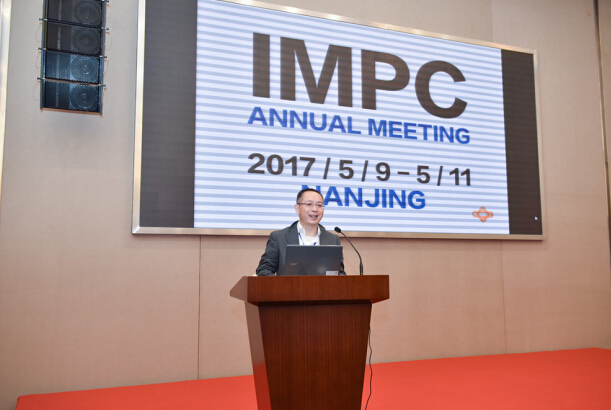From May 9th to 12th, 2017, the Annual Meeting of the Phenotypic Analysis Alliance (IMPC) and the Symposium on the Application of Animal Disease Model Resources were grandly opened in Nanjing, which was jointly organized by the Institute of Model Zoology of Nanjing University, the Cambridge-SU Genome Resource Center of Soochow University, the Key Laboratory of Medical Technology of Nanjing University-Nanjing Institute of Biomedicine, Nanjing Biomedical Valley, and the Jiangsu Society of Cell and Developmental Biology.
As one of the main sponsors, Chinapeptides(QYAOBIO) set up a booth at the venue and had in-depth exchanges with the participants. Chinapeptides(QYAOBIO) focuses on peptide synthesis, protein synthesis, and antibody customization.
In addition to IMPC members from 12 and 18 research institutions in the United States, the United Kingdom, Canada, Germany, France, Italy, Spain, the Czech Republic, Australia, Japan, South Korea, and China (Taiwan), outstanding scientists from the fields of metabolomics, genetics, immunology, cardiovascular and other fields gave conference reports.

Professor Gao Xiang, Dean of Nanjing University-Nanjing Institute of Biomedical Research, delivered an opening speech
IMPC aims to elucidate the function of genes encoding mammals, and has been conducting a 10-year scientific collaboration program to systematically analyze mouse phenotypes since 2011. This project conducts large-scale and standardized analysis of 20,000 gene knockout mice in the direction of metabolic growth, neurobehavior, immunity and development, reveals the relationship between genes and function, and creates a functional genomics encyclopedia. At the same time, it will find more suitable animal models for human diseases and build a bridge between mouse functional genomics and human precision translational medicine.
As one of the initiating members of IMPC, Gao Xiang's team has completed the phenotypic analysis of about 5% of the 5,000 genes in the IMPC phase project in the past five years, established a complete mouse phenotypic analysis platform with unified technical standards, and provided technical services for many foreign scientific research units, hospitals and pharmaceutical companies.
Delegates from outside the conference also showed great interest in the data available to IMPC and discussed possible resource utilization and R&D directions.

Mark Moore, Chairman of the IMPC Alliance, summarized the progress and outlook of IMPC's work

Professor Zhou Qi, academician of the Chinese Academy of Sciences, shared the new research results of stem cell research and application fields

Professor Li Jinsong of the Institute of Biochemistry and Cells of Shanghai Institute of Biological Sciences gave a report

Professor Li Xiaoying, Chief Physician of the Department of Endocrinology and Metabolism, Ruijin Hospital, Shanghai Jiao Tong University School of Medicine, made a progress report on the pathogenesis of diabetes

Damian Smedley, head of the Queen Mary Institute's UK 100,000 Genomes Project, shares the disease models found from IMPC data

Steve Brown, Chairman of the General Assembly from MRC Harwell, UK

Professor Yang Zhongzhou of the Institute of Model Animals of Nanjing University gave a report on cardiovascular mouse disease models

Delegates raised questions and discussed enthusiastically

Conference site

Conference site

During the coffee break, some of the participants came to the booth to communicate


 Contact Us
Contact Us
 Return
Return